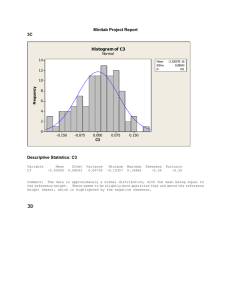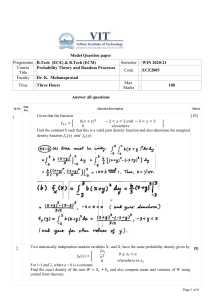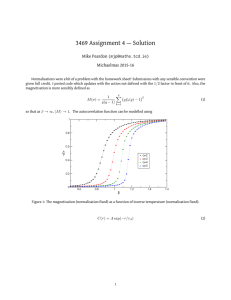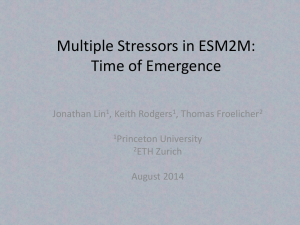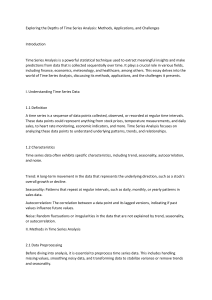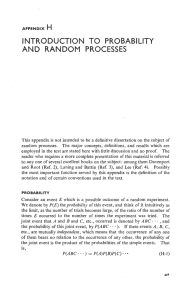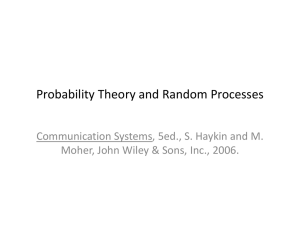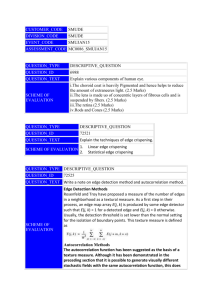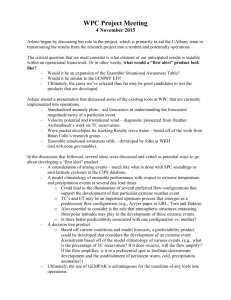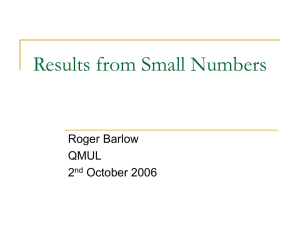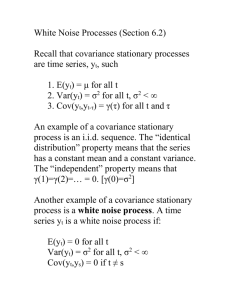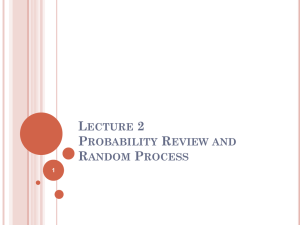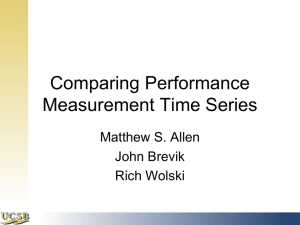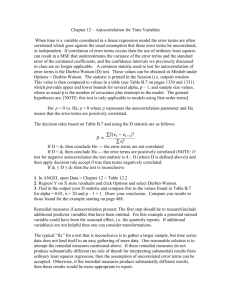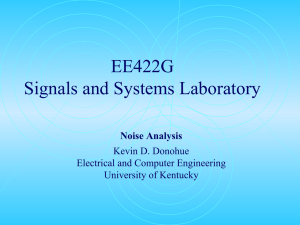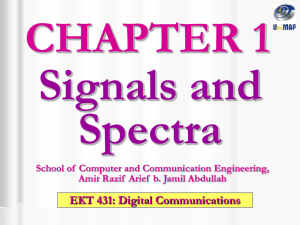NoisePlots
advertisement
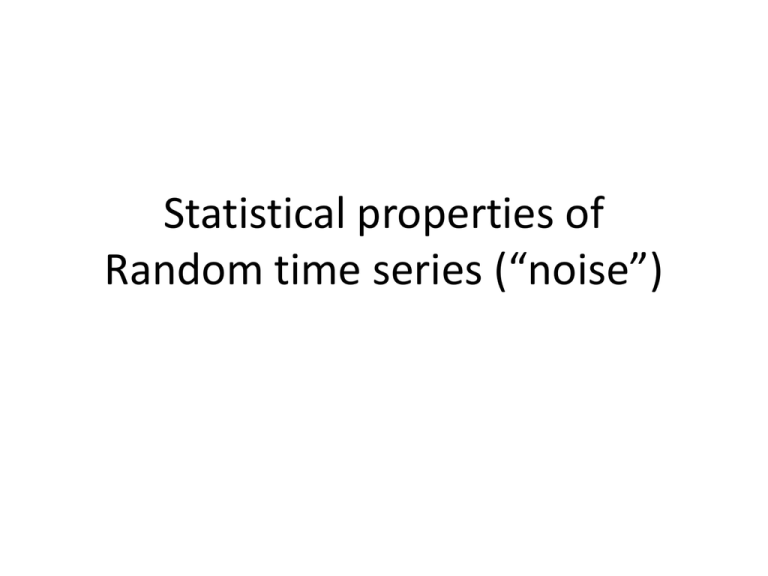
Statistical properties of
Random time series (“noise”)
Normal (Gaussian) distribution
Probability density:
A realization (ensemble element)
as a 50 point “time series”
Another realization with 500 points
(or 10 elements of an ensemble)
From time series to Gaussian
parameters
• N=50: <z(t)>=5.57 (11%); <(z(t)-<z>)2>=3.10
• N=500: <z(t)>=6.23 (4%); <(z(t)-<z>)2>=3.03
• N=104: <z(t)>=6.05 (0.8%); <(z(t)-<z>)2>=3.06
Divide and conquer
• Treat N=104 points as 20 sets of 500 points
• Calculate:
– mean of means: E{m}=<mk>=5.97
– std of means: sm=<(m-E{m})2k>=0.13
• Compare with
– N=500: <z(t)>=6.23; <z2(t)>=3.03
– N=104: <z(t)>=6.05; <z2(t)>=3.06
– 1/√500=0.04; 2sm/E{m}=0.04
Generic definitions
(for any kind of ergodic, stationary noise)
• Auto-correlation function
For normal distributions:
Autocorrelation function of a normal
distribution (boring)
Autocorrelation function of a normal
distribution (boring)
Frequency domain
• Fourier transform (“FFT” nowadays):
IF
• Not true for random noise!
• Define (two sided) power spectral density
using autocorrelation function:
• One sided psd: only for f >0, twice as above.
Discrete and finite time series
•
•
•
•
•
Take a time series of total time T, with sampling Dt
Divide it in N segments of length T/N
Calculate FT of each segment, for Df=N/T
Calculate S(f) the average of the ensemble of FTs
We can have few long segments (more uncertainty, more frequency resolution), or many short
segments (less uncertainty, coarser frequency resolution)
